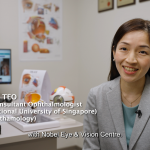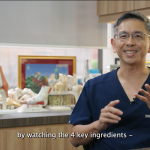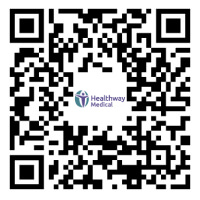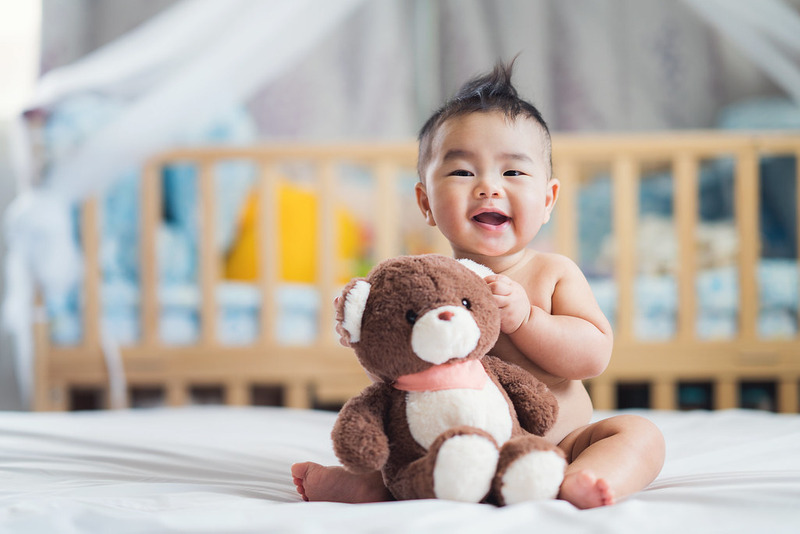
Positive Airway Pressure can be very effective in treating sleep apnea and other breathing problems
Positive airway pressure (PAP) machines, which keep your respiratory tract open when you sleep, can be very effective in treating sleep apnea and other breathing problems e.g. in neuromuscular disorders and collapsible airways. It is most commonly used in persons with sleep apnea. We are here to help parents who use PAP to find solutions to the problems often encountered when helping to begin PAP treatment for their child.
What do PAP machines do for my child?
If your child has obstructive sleep apnea, his upper airway collapses again and again as he sleeps. PAP devices give you just the right amount of pressurised air needed to prevent this collapse. Properly set and used whenever your child sleeps, the PAP machines can eliminate your child’s apnea and snoring so that you and your child can get a good night’s sleep.
What kind of PAP machine should my child use?
Various PAP machines and masks are available, allowing each child to find the combination of equipment that works best. The pressurised air comes through a mask which fits over the nose or nose and mouth.
Most children first try PAP machines that deliver a continuous fixed amount of pressurised air called continuous positive airway pressure (CPAP). Some children may need two-level PAP machines Bi-level BPAP, which deliver more pressurised air with breathing in and less with breathing out. Self-adjustable PAP machines (Auto-CPAP) will raise pressurised air levels only when apnea occurs. Your child’s PAP machine needs to be carefully adjusted to provide the proper amount of pressurised air needed in all body positions, no matter how deep the sleep. To determine the amount of pressure that is right for your child, his or her sleep is monitored while he or she uses a PAP device, and the pressure of air is raised in small amounts until the apneas are eliminated. Higher pressures may be needed during some sleep stages and in some sleeping positions. The sleep technologists are experienced in helping people get used to sleeping with PAP. In some conditions, the child may need to be on the machine all the time.
Obstructive sleep apnea can usually be completely controlled with PAP, but your child must use it whenever he or she sleeps. Untreated sleep apnea or other breathing problems can lead to poor school performance, behavioural problems, delayed growth and even heart failure and death. Getting used to sleeping with a PAP machine takes time. While at first you may find it inconvenient or troublesome, you should help your child give it a good try. It can really help your child.
Also, most CPAP masks are adjustable to make the child feel more comfortable in wearing it. The good news is that if one CPAP mask or device doesn’t work for your child, you have other options.
Common problems with questions with PAP Therapy
1) Nasal discomfort
Nasal stuffiness or congestion is common at the beginning of PAP treatment. This is due to nasal reaction to airflow from the PAP device. These symptoms often disappear within a month. Nasal itch, runny nose,
nosebleeds, nose dryness are other frequent nasal problems. These symptoms can be helped by the following treatments:
- Applying nasal saline sprays before using PAP
- PAP humidifiers
- Oral antihistamines or decongestants
- Antiallergenic or anticholinergic nasal sprays
Consult the doctor to discuss treatment options.
2) Mouth discomfort
Dryness and pain in the throat may be caused by air blowing
through an open mouth. These symptoms can be helped by:
- A chin strap to keep the mouth closed
- A full face mask that covers the nose and mouth
- PAP humidifiers
Consult the doctor to discuss treatment options.
3) Mask air leaks, sore, dry, red eyes
Most often, this is a result of a poorly fitted mask. Symptoms include sore, dry, red eyes, loss of beneficial effects of PAP, return of snoring and apnea. Sometimes a different mask or mask size is needed. If the mask worked well before, check if the mask is worn out or torn.
Contact the clinic or your PAP provider to ask for advice and assistance.
4) Noise of machine
Most new models of PAP machines are almost silent. However, if you find
the device’s noise is bothersome try the following:
- Check that the device air filter is clean and unblocked
- Place the machine on the floor or further away from the bed.
Ask your doctor or CPAP supplier if longer tubing is available and right for your machine. Contact your PAP equipment supplier to check the device to ensure its working properly
5) Skin redness where mask contacts face i.e. forehead, over bridge of nose
- Check if the mask is too tight. Mask fit with no air leak and no undue pressure is ideal. Spacers and air cushions can help.
- Mask allergy may be a problem. Use paper tape over areas where mask touches the skin.
Contact your PAP equipment supplier and doctor to find out if a different mask or nasal pillow might be beneficial. Fortunately, modern PAP masks are made of materials designed to minimise allergic responses.
6) Too much air
If the pressure of air through the nose seems too high and this sensation makes it difficult for your child to fall asleep, try using a machine with a ‘ramp’ feature. Most PAP machines have a ramp capability to allow gradual build-up of pressure at the beginning so as to help your child fall asleep more easily. Use shorter ramp time as your child gets used to PAP or if the air pressure does not bother him or her to allow full benefits of the correct PAP from the beginning.
7) Claustrophobia
Some people experience a feeling of claustrophobia, difficulty breathing, choking or suffocation when first using PAP. Let your child’s doctor know about these feelings if present. Spend time helping your child practice with your PAP mask during the day while awake and watching television or reading. You may need to start encouraging him or her to wear the PAP device for only a few minutes at a time and gradually increase the time he or she spends breathing with it until he feels comfortable. Then try wearing the mask and hose with the device turned on during the day while awake. Once your child gets used to how that feels, start using the PAP device every time your child sleeps — including naps. Just wearing the PAP device every now and then may delay getting used to it. Help your child practice regular breathing and try not to hyperventilate or fight the pressure. Some amount of discomfort during the initial therapy is not unusual. PAP can work for your child if you help him or her give it a chance.
8) Cleaning PAP devices
Regular cleaning is essential to assure proper function and safety of PAP devices. The method and schedule for cleaning hoses and masks and for changing filters may be different for each PAP devices. Refer to the manufacturer’s instruction manual for details. Improper care of PAP devices, filters, masks and hoses can lead to nasal and sinus problems (congestion, infection, etc.)
9) Upper respiratory tract infection
You may find your PAP more difficult to use when your child has a cold. More humidification or a nasal decongestant may help. If your child develops nasal, sinus or ear pain when using the machine, this could be a sign of developing infection. Contact the doctor for further advice.
Time and patience are the key to success
Using a CPAP device can be frustrating as your child tries to get used to it, but it’s important to stick with it. The treatment is essential to avoid complications of obstructive sleep apnea. Work with your doctor and PAP supplier to ensure the best fit and device. Regular visits to the doctor are important and can help troubleshoot any problems and adjust settings, if needed. With time and patience, most children can accept CPAP and enjoy a better quality of life and health.
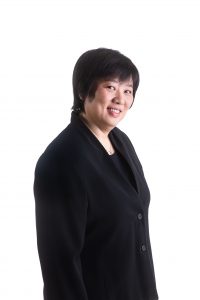
Dr Jenny Tang
Paediatrician,
Asthma, Lung, Sleep & Allergy
SBCC Asthma, Lung, Sleep & Allergy





